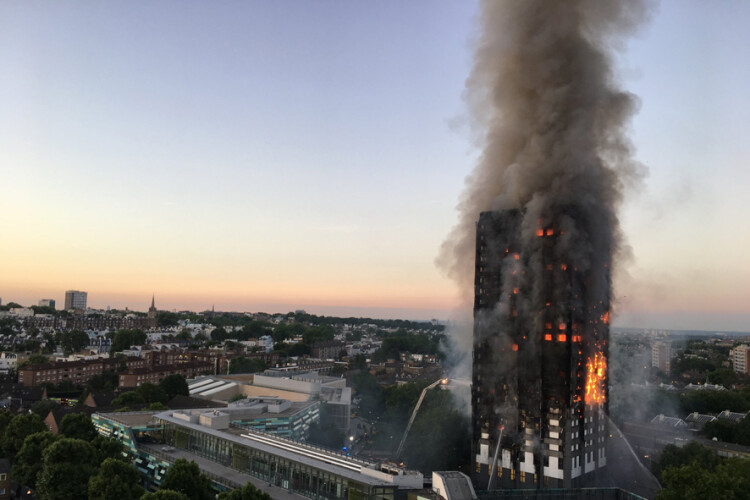Next week sees the publication of Sir Martin Moore-Bick’s final report of the official Grenfell Tower Inquiry – and all sides of the construction industry will be in for a kicking.
It has been well documented over the past seven years that landlords, architects, consulting engineers, product suppliers and contractors – the entire supply chain – were all culpable in the death of 72 people at Grenfell Tower.
When Grenfell Tower in Kensington caught fire on the night of 14th June 2017, fire and smoke spread more quickly than expected because a dangerous cladding system had been installed in a botched effort to improve the council flats. The cladding was flammable and the gaps between the cladding panels and the original concrete walls created chimney vents to accelerate smoke.
This was all made clear in the inquiry’s phase one report, published in October 2019.
The phase 2 report is published on Wednesday 4th September 2024.
The Construction Industry Council (CLC) – a panel of industry representatives selected and administered by the government’s Department for Business & Trade – has today published a report seeking to reassure the world that the UK construction industry has changed since 2017, insinuating that that buildings going up today are now safe.
The CLC also seeks to take credit for that.
Mark Reynolds, industry-side chair of the CLC and chief executive of Mace Group, writes in the report, Creating Safe Buildings: “The Construction Leadership Council, acting as a convener of collective industry action, has worked to ensure that efforts across the sector to deliver the changes required are coordinated, effective and delivered in a way that enables the entire sector – from the smallest independent traders to the largest contractors and consultancies – to implement the required changes.”
Some of the changes have been legislative, from above, such as the Building Safety Act; others have come from the industry, such as a promise from product marketers to stop giving false information about their products.
“The Building Safety Act in 2022 was the most significant change in the regulation and governance of the construction industry in living memory,” says Mark Reynolds.

The legislation created three new bodies to provide oversight: the Building Safety Regulator, the National Regulator for Construction Products and the New Homes Ombudsman. It imposed new responsibilities for accountable persons, building owners, landlords and developers.
Building control is now a regulated profession, organisations working on construction projects must be able to demonstrate that their personnel are competent, a ‘golden thread’ of building data, including product information, must be stored digitally and kept up to date during the life of a high-rise building.
The Code for Construction Product Information (CCPI) introduced a system providing independent third-party assessment to verify the information provided by manufacturers for each of their products. The code provides buyers with assurance that manufacturers are not lying, spinning or obfuscating in their product material. As of the summer 2024, only 77 product sets, comprising around 1,500 products and systems, have been verified to the code.

However, all this may not be enough, Reynolds and the CLC acknowledge. Though they don’t spell it out, parties involved in the dodgy refurbishment of Grenfell Tower are likely to be eventually found to have breached regulations and laws (though that process will still take a few more years yet). The sort of people that breached existing regulations – either through ignorance, design or only following orders – are the sort of people that will continue to breach the regulations, no matter how many rules are written down.
Or as Reynolds himself puts it: “We must…be honest with ourselves that change is still required to deliver an industry which is accountable and trusted by the people that live, work and spend their time in the buildings we construct.”
The rules for the construction industry may have changed, but there is not much evidence that the people who work within it have. The public will just see the raw data and make their own judgement about the property and construction sector.
Latest monthly data from the Ministry of Housing, Communities & Local Government shows that, as of the end of July 2024, just 2,299 (50%) of the 4,630 residential buildings 11-metre and over in height identified with unsafe cladding have either started or completed the necessary remediation works. That is hardly a strong indicator of an industry in a hurry to change.
No wonder public trust remains lacking.
Got a story? Email news@theconstructionindex.co.uk



